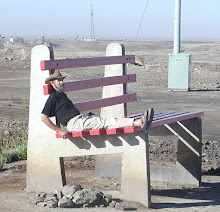Wednesday, 3 February 2021
Why Are Republican Presidents So Bad for the Economy?
Almost any indicator: gross domestic product, employment, incomes, productivity, even stock prices. It’s true if you examine only the precise period when a president is in office, or instead assume that a president’s policies affect the economy only after a lag and don’t start his economic clock until months after he takes office. The gap holds almost regardless of how you define success,Since 1933, the economy has grown at an annual average rate of 4.6 percent under Democratic presidents and 2.4 percent under Republicans. The average income of Americans would be more than double its current level if the economy had grown at the Democratic rate for all of the past nine decades.
For explaining why, Congressional control is not the answer. The pattern holds regardless of which party is running Congress. Deficit spending also doesn’t explain the gap: It is not the case that Democrats juice the economy by spending money and then leave Republicans to clean up the mess. Over the last four decades, in fact, Republican presidents have run up larger deficits than Democrats.
One reason might be that Republican economic policy since 1980 has revolved around a single policy: large tax cuts, tilted heavily toward the affluent. There are situations in which tax cuts can lift economic growth, but they typically involve countries with very high tax rates. The United States has had fairly low tax rates for decades.
Another possibility is that the two parties are both responding to the interest groups that support and finance them. Democratic-leaning groups (like labor unions and civil-rights organizations) may favor policies that lift broad-based economic growth, while Republican-leaning groups (like the wealthy) favor policies that mostly shift income toward themselves.Yes, he thinks that politicians should be able to lie to their constituents, because it is what he does.
Subscribe to Comments [Atom]

Post a Comment